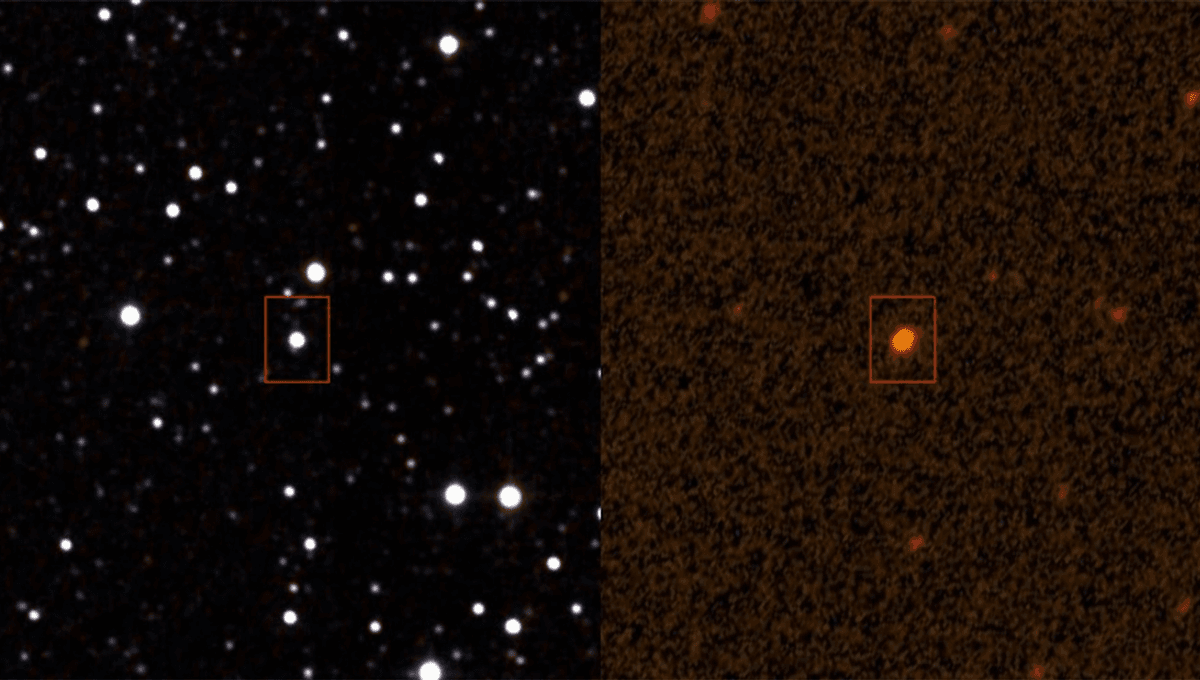
In 2018, the world got very excited about an unusual star. KIC 8462852, better known as Boyajian’s star or just the “alien megastructure” star, it was found to be dimming in an unusual way. As a planet orbits a star, it blocks out a certain amount of light and causes it to dim from our perspective on Earth. When we looked at Boyajian’s star, however, we found that it was dipping by variable amounts.
This led to wild speculation that we could have found a “Dyson sphere” – a theoretical megastructure built by an advanced extraterrestrial civilization around a star to harness its energy. Of course, the explanation turned out to be dust.
But that hasn’t stopped the search for supposed advanced alien civilizations (Type II on the Kardashev scale) that may wish to construct such megastructures. Two teams have recently come out with papers on their searches for potential Dyson Spheres, finding potential candidates worthy of closer inspection.
Looking at the light emitted from stars, we can tell all sorts about their composition, age, and type. When looking for Dyson Spheres, astronomers are looking for two things; variable luminosity as the structure passes in front of the star from our perspective, and an excess of infrared light caused by heat waste that could be emitted by a megastructure.
The problem, as noted by both studies, is that excess infrared can be a sign of circumstellar dust, protoplanetary disks, or debris disks. In short, you would expect excess infrared from younger stars, but this diminishes as the star ages and the matter coalesces into planets and asteroid belts. Excess infrared radiation has been detected in older stars, aged between 10 and 200 million years – 16 to be precise – while one case has been found in a star over 1 billion years old.
These are thought to be cases of Extreme Debris Disks (EDD), potentially caused by collisions between rocky planets. However, there are still unanswered questions about how this could happen.
“The stellar ages of these candidates are in tension with the current models of rocky planet formation which predict that most collision events (leading to such disks) should occur within the first 100 Myr,” one team writes in a not-yet peer-reviewed paper posted to pre-print server arXiv. “Therefore, these objects might indicate that these processes last longer than thought or that other processes lead to such disks.”
The good news is that searching for extreme excesses of infrared light can help us to learn more about these unusual and rare systems and potentially locate candidates for Dyson Spheres at the same time, making it a double win.
Using machine learning to search through data on nearly 4.9 million stars and identify cases where infrared emissions are much higher than expected, the first team found 53 potential candidates. These include stars thought to be younger, but also more mature stars, making them better candidates for potential alien megastructures. Precise aging and further observation of these stars is necessary to draw more conclusions, and of course, the explanation is likely to be down to non-alien explanations.
A second paper accepted for publication in the Monthly Notices of the Royal Astronomical Society focused on searching for partial Dyson Spheres – megastructures that do not entirely surround the star – and looked at a catalog of around 320,000 stars and identified “seven sources displaying mid-infrared flux excess of uncertain origin”.
Interestingly, these candidates appear to be M-dwarf stars in their main sequence, or stars smaller in mass than our Sun which are in the main stable period of their lifespan. This is surprising.
“M-dwarf debris disks are very rare objects, and up to date, only a reduced number has been confirmed,” the team explains, adding that proposed explanations for this lack of debris discs include detection and age biases, or different processes taking place around these smaller stars.
“However, the temperature and the fractional infrared luminosity […] of our candidates are different from those of typical debris disks, which tend to be cold (10 – 100 K) and to have low fractional luminosities […] These high fractional luminosities […] is a feature more compatible with young disks compared to those of ordinary debris disks […], but the lack of variability seems to be inconsistent with the young-star scenario,” the team writes, adding that there are several natural explanations for excess infrared, though none of them clearly explain what is going on with these candidates, given that they are M-dwarfs.
“Are our candidates’ strange young stars whose flux does not vary with time? Are these stars M-dwarf debris disks with an extreme fractional luminosity? Or something completely different?”
It is worth noting that these stars have been speculated to be both good and bad candidates for hosting life. Many rocky planets have been found around them, but the light hitting them is longer in wavelength, potentially making them poor candidates for photosynthetic life.
This team stresses that though these candidates appear to be consistent with partial Dyson Spheres, it is extremely premature to assume that this is the cause, and further observations are needed. We have found plenty of weird objects that defy our expectations, and precisely zero aliens. Expect this pattern to continue, until hopefully, one day, it doesn’t.
The first study is posted to pre-print server arXiv, while the second is accepted for publication in the Monthly Notices of the Royal Astronomical Society.
Source Link: Two New Searches Find 60 Potential "Alien Megastructures" In Our Galaxy